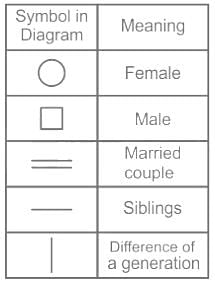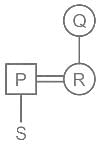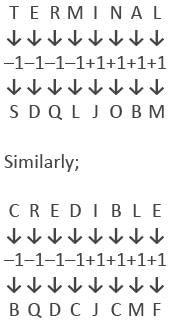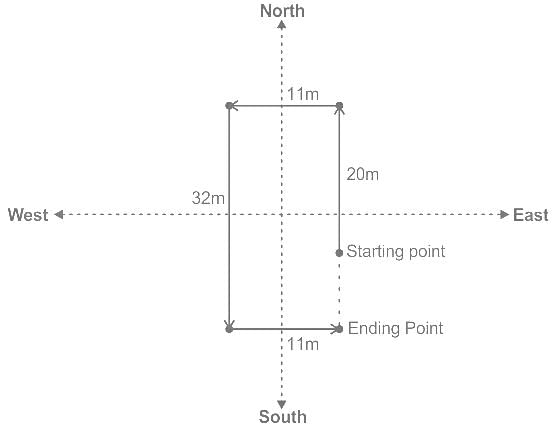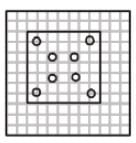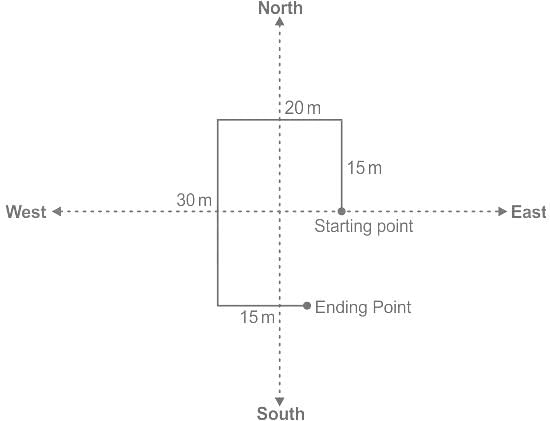APSC AE CE Paper 2 Mock Test - 2 - Civil Engineering (CE) MCQ
30 Questions MCQ Test - APSC AE CE Paper 2 Mock Test - 2
Who among the following murdered Abul Fazl, the official historian of Akbar, at the instigation of Prince Salim in 1602?
Directions to Solve
In each word of the following questions consists of pair of words bearing a relationship among these, from amongst the alternatives, pick up the pair that best illustrate a similar relationship.
Question -
Candle : Wick
P is father of S. Q is mother of R. R is the mother of S. How is Q is related to S?
Consider the following statements about Montague Chelmsford reforms.
1. Under Montagu-Chelmsford reforms education was shifted to provincial ministries
2. Government started taking a direct interest in education matters
3. Philanthropic efforts, to grow the education, stopped
Which of these statements are correct?
Direction: Read the following passages carefully and answer the question that follows.
Why doesn't the air remain still ? The reason is that air, when it becomes heated, becomes lighter, and it rises. When it rises, other air moves in to take its place. The temperature of air becomes like the surface of the earth over which it travels. Over dry land, the air can become very hot. Then, when the sun goes down, it cools off quickly. Over the water air heats up more slowly and cools off more slowly. These changes cause the movement of air,which we call wind.
Q. As air heats up, it?
Direction: In the following question, a sentence has been given in Active/Passive Voice. Out of the four alternative suggested, select the one which best expresses the same sentence in Passive/Active Voice.
They will demolish the entire block.
In which country is the World Energy Congress 2024 being organized?
Directions: Study the following question carefully and choose the right answer.
In a certain code ‘TERMINAL’ is written as ‘SDQLJOBM’. How is CREDIBLE written in that code?
Find the wrong term in the given series?
50, 25, 15, 6.25, 3.125
Direction: A word in capital letters is followed by four words. Choose the word that is most nearly opposite in meaning to the word given in capital letters.
NEBULOUS
When did the Nationalists and the UK government arrive at an agreement?
Rima walks 20 m north then she turns left and walks 11 m. Again she turns left and walks 32 m. Finally she turns left and walks 11 m. In which direction is she from her original point?
Kathy was looking for a strong but light material to use for making her water jugs. Unfortunately, she chose noodelite. It proved to too porous to hold jelly. A porous material _____
Direction: If a Paper (Transparent Sheet) is folded in a manner and a design or pattern is drawn. When unfolded this paper appears as given below in the answer figure. Choose the correct answer figure given below.
A piece of paper is folded and cut as shown below in the question figures. From the given answer figures, indicate how it will appear when opened.
Question Figure

Answer figure

Ramu walks 15m towards the north then turns left and covers 20m then covers also 30m by turning south then again turns left and covers 15m. What is the total distance covered by him?
Arrange the following events chronologically.
1. Passing of states reorganization act
2. Appointment of states reorganization Commission
3. Creation of Andhra
Choose from the following options.
Which of the following materials CANNOT be recycled?
Direction: In the following questions, choose the word opposite in meaning to the given word as your answer.
Hasten
World Air Quality Report 2023, recently seen in the news, is published by which organization?
The want satisfying power of a commodity is known as:
Directions to Solve
In each of the following questions find out the alternative which will replace the question mark.
Question -
68 : 130 :: ? : 350
Directions: Select the most appropriate idiom (in the context) to fill in the sentence.
We have been using our credit cards so much we are now _________________ in debt.
What is the main objective of the BIMSTEC Faculties Exchange Programme in Dhaka?
Assertion: The share of agriculture in the Gross Domestic Product (GDP) is declining in India.
Reason: Agriculture sector is facing problems of non irrigated land, increasing debts, seasonal employment etc.
Which agency is not included in informal loan sector or agency:
Directions: In each of the following questions, a sentence has been given in Active (or Passive) Voice. Out of the four alternatives suggested, select the one that best expresses the same sentence in Passive/ Active Voice.
Darjeeling grows tea.
Who ordered the judicial functionaries to complete census registers for the various quarters of Delhi?



